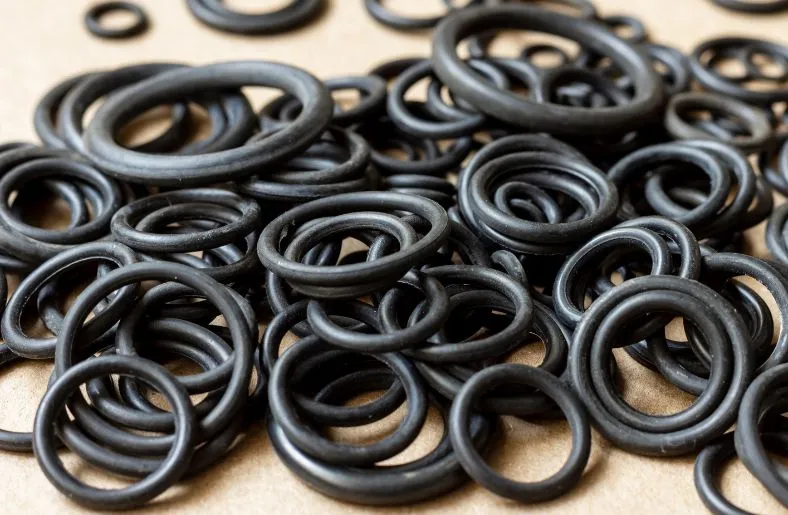Rubber seals are commonly found in various household items, from doors and windows to car parts and plumbing fixtures. Over time, these seals can become worn out, dry, or develop cracks, which can lead to leaks, drafts, and other issues. Fortunately, WD-40 is a versatile product that can help restore and maintain rubber seals.
In this ultimate guide, we will explore the benefits, risks, and best practices of using WD-40 on rubber seals.
Table of Contents
What is WD-40 and how does it work on rubber seals?
WD-40 is a popular multi-purpose lubricant and water-displacing spray that has been used for decades. It is composed of various chemicals, including petroleum distillates, which give it its lubricating and water-repellent properties.
When applied to rubber seals, WD-40 penetrates the surface, providing a thin protective layer that helps prevent drying, cracking, and sticking. Additionally, it helps restore the natural flexibility and resilience of rubber, prolonging the life of the seals.
Shop my favourite items below:
- WD-40 Specialist Silicone Lubricant with SMART STRAW SPRAYS 2 WAYS: https://amzn.to/4hDjeGR
- Faucet O-Rings Grease Silicone Lubricant for O Ring Rubber Washers Water Filter Pool Pump Gaskets Cartridges Valves Pressure Plugs Seals: https://amzn.to/4hhTHmL
- Permatex 81101 O-Ring Lubricant Lubricates & Extends Life of O-Rings, Gaskets, Seals, Pressure Plugs & Valves, Pool Pumps & Filters, Water Faucet Valves, Food Grade Certified: https://amzn.to/3CkEZwn
Benefits of using WD-40 on rubber seals
Using WD-40 on rubber seals offers several key benefits. Firstly, it helps prevent deterioration by nourishing the rubber and reducing the effects of aging. This can significantly extend the lifespan of rubber seals, saving you time and money on replacements.
Secondly, WD-40 provides a water-repellent barrier, preventing moisture from seeping into the seals and causing damage. This is particularly important for outdoor applications or areas prone to high humidity. Lastly, WD-40 can also help reduce friction between rubber seals and other surfaces, making it easier to open doors and windows, and improving overall functionality.
In addition to these primary benefits, WD-40 also has secondary advantages. It can eliminate squeaking or creaking noises that often occur when rubber seals rub against other materials. This can be especially beneficial for automotive applications, where quiet and smooth operation is desired.
Furthermore, WD-40’s versatility means that it can be used on a wide range of rubber seals, from small gaskets to large weatherstrips. This makes it a convenient and cost-effective solution for maintaining various items around the house or workplace.
Risks and precautions when using WD-40 on rubber seals
While WD-40 can be highly effective in rejuvenating rubber seals, it is important to be aware of potential risks and take appropriate precautions. One of the main risks is that WD-40, being a petroleum-based product, can potentially cause swelling or softening of certain types of rubber. Therefore, it is crucial to test the product on a small, inconspicuous area of the seal before applying it to the entire surface. This will help ensure compatibility and prevent any unwanted damage.
Another precaution to keep in mind is to avoid using WD-40 on seals that are already damaged or deteriorated beyond repair. In such cases, it is best to replace the seals entirely, as WD-40 may only provide a temporary solution or worsen the condition.
Additionally, it is important to use WD-40 in a well-ventilated area, as the fumes can be strong and potentially harmful if inhaled in large quantities. Lastly, always read and follow the instructions provided by the manufacturer to ensure safe and effective use of WD-40 on rubber seals.
Best practices for applying WD-40 on rubber seals
To achieve the best results when using WD-40 on rubber seals, it is important to follow a few best practices. Firstly, make sure to clean the seals thoroughly before applying WD-40. This will remove any dirt, grime, or old lubricants that may interfere with the product’s effectiveness. Use a mild detergent or rubber cleaner and a soft brush or cloth to gently scrub the surface.
Once the seals are clean and dry, apply WD-40 evenly, using a clean cloth or a small brush. Be sure to cover the entire surface of the seal, paying extra attention to any areas that are prone to cracking or sticking.
After applying WD-40, allow sufficient time for the product to penetrate and dry. This will ensure that the protective layer is properly formed and adheres to the rubber surface. Avoid using the sealed item immediately after application, as this can potentially remove or dilute the WD-40. Instead, wait for at least 15-30 minutes, or follow the recommended drying time provided by the manufacturer.
Lastly, consider applying WD-40 periodically, especially in high-wear or exposed areas, to maintain the seals’ optimal performance and longevity.
Related Guide: How to Lubricate Alternator Pulley for Optimal Performance: A Comprehensive Guide (2023-2024)?
FAQs
1. Can WD-40 damage rubber seals?
While WD-40 can potentially cause damage to certain types of rubber, it is generally safe for use on most household rubber seals. It is important to conduct a compatibility test before applying WD-40 to the entire surface of the seal.
2. How often should I apply WD-40 to rubber seals?
The frequency of WD-40 application depends on several factors, such as the condition of the seals, the environment, and the level of usage. As a general guideline, it is recommended to apply WD-40 every few months or whenever you notice signs of drying or cracking.
3. Can I use WD-40 on silicone seals?
While WD-40 is generally safe for use on silicone seals, it is still advisable to conduct a compatibility test before applying it to the entire surface. Silicone-based lubricants may be a better alternative for maintaining silicone seals.
4. Is WD-40 suitable for all types of rubber?
WD-40 is compatible with many types of rubber commonly used in household items. However, certain rubber compounds may be adversely affected by WD-40. Conduct a compatibility test to ensure safe use.
5. Can WD-40 be used on rubber seals in extreme temperatures?
WD-40 can be used in a wide range of temperatures, but extreme heat or cold may affect its performance. If you live in an area with extreme temperature fluctuations, consider using a specialized rubber conditioner or protectant.
Conclusion
Using WD-40 on rubber seals can provide numerous benefits, such as extending their lifespan, preventing leaks, reducing friction, and improving overall functionality. However, it is important to be aware of the potential risks and take necessary precautions. Conducting compatibility tests, following best practices, and considering alternatives when needed will help ensure safe and effective use of WD-40 on rubber seals.
Remember, proper maintenance and regular inspections are key to keeping rubber seals in optimal condition. By incorporating WD-40 or suitable alternatives into your maintenance routine, you can enjoy the benefits of longer-lasting seals and avoid costly repairs or replacements.
So, the next time you notice your rubber seals starting to show signs of wear, don’t hesitate to reach for WD-40 and give them a new lease of life. With the right approach and care, you can keep your seals in top shape for years to come.

